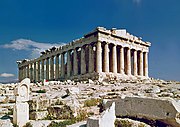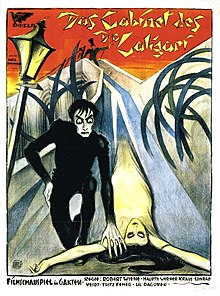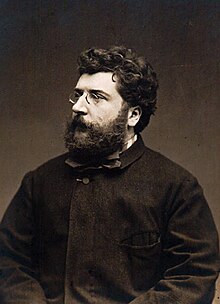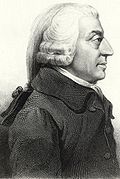Portal:The arts
T H E A R T S P O R T A L
The arts or creative arts are a vast range of human practices of creative expression, storytelling, and cultural participation. The arts encompasses multiple diverse and plural modes of thinking, doing, and being, in an extremely broad range of media. Both dynamic and a characteristically constant feature of human life, they have developed into innovative, stylized, and sometimes intricate forms. This is often achieved through sustained and deliberate study, training, and/or theorizing within a particular tradition, across generations, and even between civilizations. The arts are a vehicle through which human beings cultivate distinct social, cultural, and individual identities while transmitting values, impressions, judgements, ideas, visions, spiritual meanings, patterns of life, and experiences across time and space.
The arts can refer to common, popular, or everyday practices as well as more sophisticated, systematic, or institutionalized ones. They can be discrete and self-contained or combine and interweave with other art forms, such as the combination of artwork with the written word in comics. They can also develop or contribute to some particular aspect of a more complex art form, as in cinematography. By definition, the arts themselves are open to being continually redefined. The practice of modern art, for example, is a testament to the shifting boundaries, improvisation and experimentation, reflexive nature, and self-criticism or questioning that art and its conditions of production, reception, and possibility can undergo.
As both a means of developing capacities of attention and sensitivity and as ends in themselves, the arts can simultaneously be a form of response to the world and a way that our responses and what we deem worthwhile goals or pursuits are transformed. From prehistoric cave paintings to ancient and contemporary forms of ritual to modern-day films, art has served to register, embody, and preserve our ever-shifting relationships to each other and to the world. (Full article...)
Featured articles -
Featured picture
Did you know...
- ... that one novelty of Hans Gieng's 1543 statue on the Fountain of Justice (pictured) in Berne was the portrayal of Lady Justice as blindfolded or blind?
- ... that in 1656, German violinist Thomas Baltzar helped premiere The Siege of Rhodes, thought to have been the first all-sung English opera?
- ... that the Franklin County Courthouse incorporates the walls and columns left after Confederate forces burned the previous courthouse during the American Civil War?
In this month
- 9 June 1904 – The London Symphony Orchestra, conducted by Hans Richter, plays its first concert
- 18 June 1964 – Italian painter Giorgio Morandi, whose still lifes and landscapes were noted for their tonal subtlety, dies in Bologna at the age of 73
- 20 June 1703 – The Love Suicides at Sonezaki by Chikamatsu Monzaemon, often considered the greatest Japanese dramatist, receives its first performance
- 24 June 1924 – Efua Sutherland, a foundational figure in modern Ghanaian drama, is born in the Cape Coast region of Ghana
- 29 June 1861 – Elizabeth Barrett Browning (pictured), one of the most prominent poets of the Victorian era, dies in Florence at the age of 55
News
- August 5: DaBaby Levitating remix losing US radio audiences after the rapper's comments on HIV/AIDS
- June 11: Taylor Swift's Evermore records biggest sales week of the year as it returns to No 1 on album chart
- May 27: Olivia Rodrigo's song good 4 u debuts at No 1 on US Billboard Hot 100 chart
- May 25: 'Rock and roll never dies': Italy wins Eurovision after 30 years
- February 10: Disney to shut down Blue Sky Studios, animation studio behind 'Ice Age'
Featured biography
I. M. Pei (born 1917) is a Chinese American architect, often called a master of modern architecture. Born in Guangzhou, in 1935 he moved to the United States. While enrolled at Massachusetts Institute of Technology, he became unhappy with the school's focus on Beaux-Arts architecture, and spent his free time researching the emerging architects, especially Le Corbusier. After graduating, he joined the Harvard Graduate School of Design and formed a friendship with the Bauhaus architects Walter Gropius and Marcel Breuer. Pei spent ten years working with New York real estate magnate William Zeckendorf before establishing his own independent design firm that eventually became Pei Cobb Freed & Partners. Among the early projects on which Pei took the lead were the L'Enfant Plaza Hotel in Washington, DC, and the Green Building at MIT. His first major recognition came with the National Center for Atmospheric Research in Colorado; his new stature led to his selection as chief architect for the John F. Kennedy Library in Massachusetts. He went on to design Dallas City Hall and the East Building of the National Gallery of Art. In the early 1980s, Pei was the focus of controversy when he designed a glass-and-steel pyramid for the Louvre museum in Paris. Pei has won a wide variety of prizes and awards in the field of architecture, including the 1983 Pritzker Prize, sometimes called the Nobel Prize of architecture. (Full article...)
Featured audio
Selected quote
| “ | Observe the accommodation of the most common artificer or daylabourer in a civilized and thriving country, and you will perceive that the number of people, of whose industry a part, though but a small part, has been employed in procuring him this accommodation, exceeds all computation. The woollen coat, for example, which covers the day-labourer, as coarse and rough as it may appear, is the produce of the joint labour of a great multitude of workmen. The shepherd, the sorter of the wool, the wool-comber or carder, the dyer, the scribbler, the spinner, the weaver, the fuller, the dresser, with many others, must all join their different arts in order to complete even this homely production. How many merchants and carriers, besides, must have been employed in transporting the materials from some of those workmen to others who often live in a very distant part of the country? How much commerce and navigation in particular, how many ship-builders, sailors, sail-makers, rope-makers, must have been employed in order to bring together the different drugs made use of by the dyer, which often come from the remotest corners of the world? What a variety of labour, too, is necessary in order to produce the tools of the meanest of those workmen! To say nothing of such complicated machines as the ship of the sailor, the mill of the fuller, or even the loom of the weaver, let us consider only what a variety of labour is requisite in order to form that very simple machine, the shears with which the shepherd clips the wool. The miner, the builder of the furnace for smelting the ore the feller of the timber, the burner of the charcoal to be made use of in the smelting-house, the brickmaker, the bricklayer, the workmen who attend the furnace, the millwright, the forger, the smith, must all of them join their different arts in order to produce them. | ” |
Categories
WikiProjects
Parent project
Descendant projects
Related portals
Things you can do
- Check the recent changes page for improvements, other changes, and vandalism to these articles
- Article requests: Requests articles (arts and entertainment)
- Deletion discussions: Listed at Wikipedia:WikiProject Deletion sorting/Arts
- Expand: check Visual arts stubs to expand
- Notability: Articles with notability concerns, listed at WikiProject Notability
- Requested pictures: Arts topics, requested pictures



.png/220px-Kylie_Minogue_for_Life_in_Looks_by_Vogue_(cropped).png)
_–_Candaules%2C_King_of_Lydia%2C_Shews_his_Wife_by_Stealth_to_Gyges%2C_One_of_his_Ministers%2C_as_She_Goes_to_Bed_–_N00358_–_Tate.jpg/400px-William_Etty_(1787–1849)_–_Candaules%2C_King_of_Lydia%2C_Shews_his_Wife_by_Stealth_to_Gyges%2C_One_of_his_Ministers%2C_as_She_Goes_to_Bed_–_N00358_–_Tate.jpg)



.jpg/550px-Francisco_de_Goya_y_Lucientes_-_Witches%27_Sabbath_(The_Great_He-Goat).jpg)

.jpg/220px-Smetana_LCCN2014716851_(cropped).jpg)



















